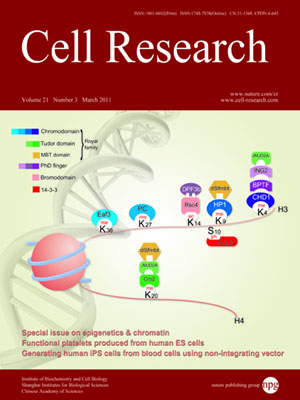
Volume 21, No 3, Mar 2011
ISSN: 1001-0602
EISSN: 1748-7838 2018
impact factor 17.848*
(Clarivate Analytics, 2019)
Volume 21 Issue 3, March 2011: 474-485
REVIEWS
Nuclear organization in genome stability: SUMO connections
Shigeki Nagai1,2,*, Niloofar Davoodi1,* and Susan M Gasser1
1Friedrich Miescher Institute for Biomedical Research, Maulbeerstrasse 66, CH-4058 Basel, Switzerland
2Current address: Stanford University School of Medicine, Department of Structural Biology, 299 Campus Drive, Stanford, CA, 94305-5126, USA
Correspondence: Susan M Gasser,(susan.gasser@fmi.ch)
Recent findings show that chromatin dynamics and nuclear organization are not only important for gene regulation and DNA replication, but also for the maintenance of genome stability. In yeast, nuclear pores play a role in the maintenance of genome stability by means of the evolutionarily conserved family of SUMO-targeted Ubiquitin ligases (STUbLs). The yeast Slx5/Slx8 STUbL associates with a class of DNA breaks that are shifted to nuclear pores. Functionally Slx5/Slx8 are needed for telomere maintenance by an unusual recombination-mediated pathway. The mammalian STUbL RNF4 associates with Promyelocytic leukaemia (PML) nuclear bodies and regulates PML/PML-fusion protein stability in response to arsenic-induced stress. A subclass of PML bodies support telomere maintenance by the ALT pathway in telomerase-deficient tumors. Perturbation of nuclear organization through either loss of pore subunits in yeast, or PML body perturbation in man, can lead to gene amplifications, deletions, translocations or end-to-end telomere fusion events, thus implicating SUMO and STUbLs in the subnuclear organization of select repair events.
Cell Research (2011) 21:474-485. doi:10.1038/cr.2011.31; published online 15 February 2011
FULL TEXT | PDF
Browse 2134


